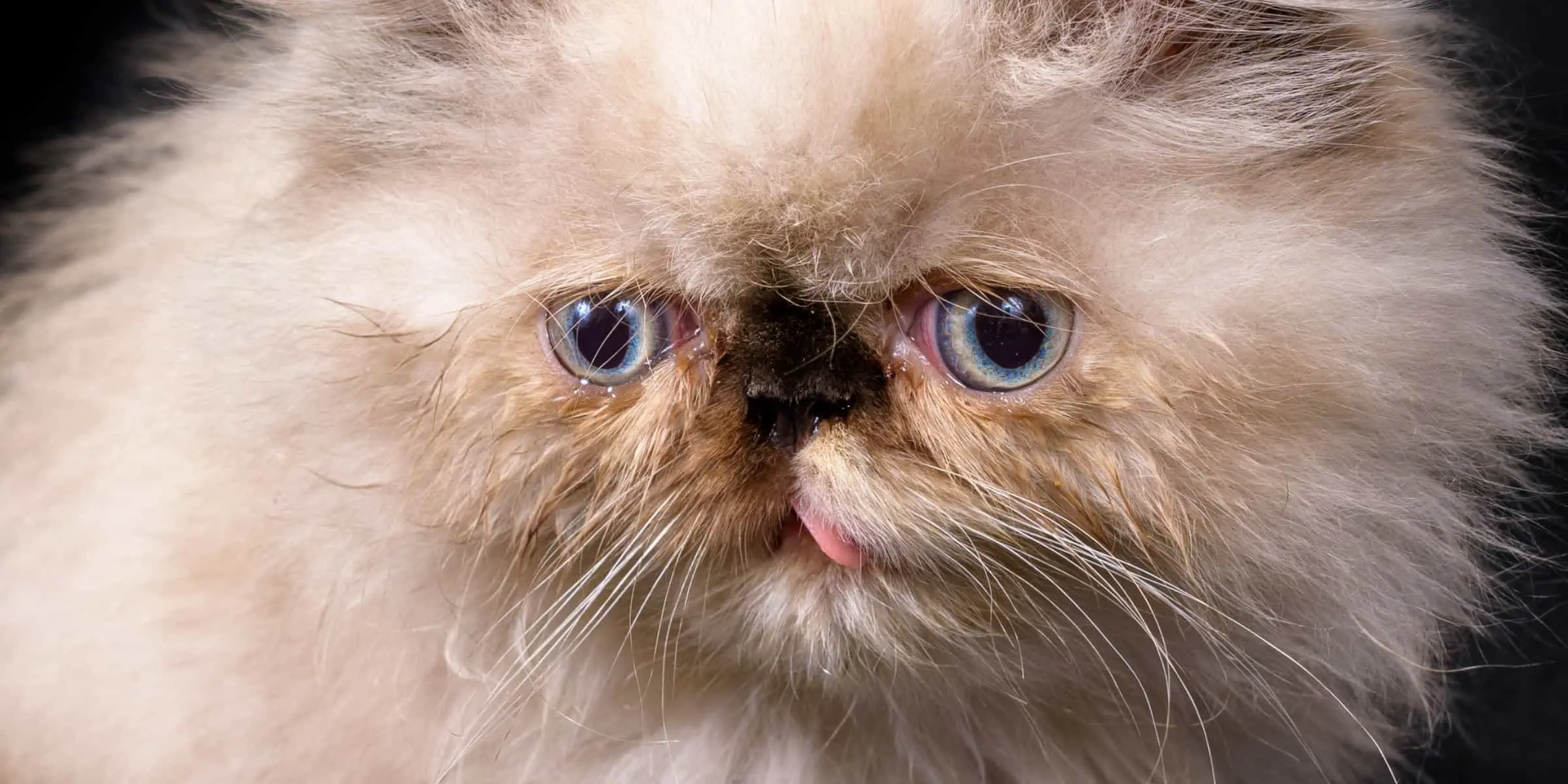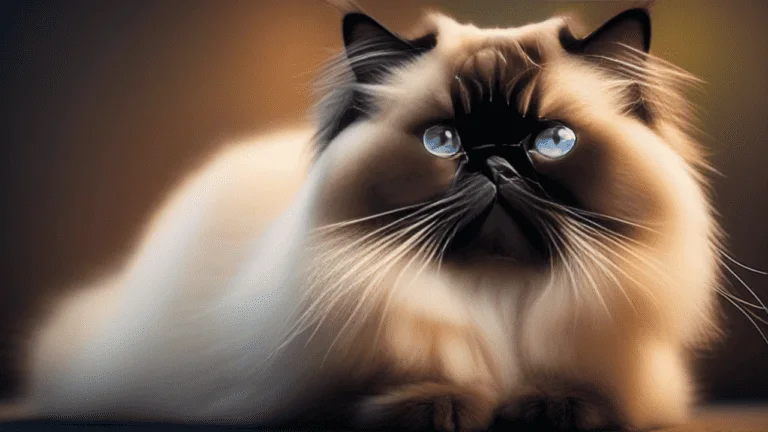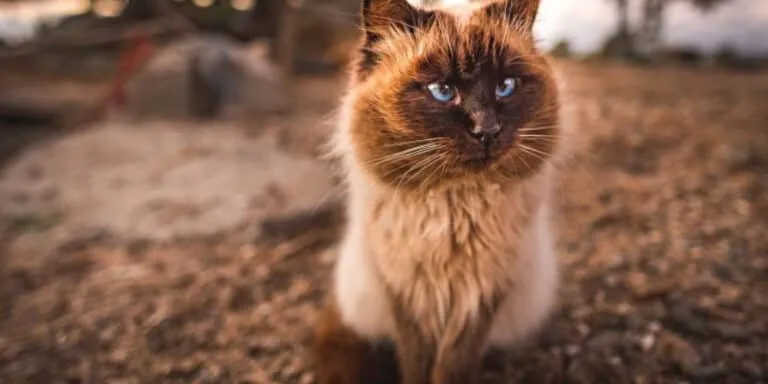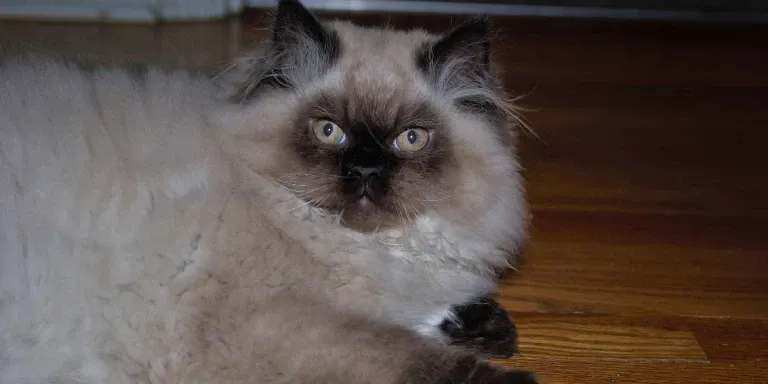The Best Fluffy Pancakes recipe you will fall in love with. Full of tips and tricks to help you make the best pancakes.

Are you considering bringing a Himalayan cat into your home? These beautiful felines are known for their striking blue eyes and luxurious fur, but owning one comes with its own set of challenges. While Himalayan cats make wonderful companions, it’s important to consider the cons before making a decision.
Some potential cons of owning a Himalayan cat include their tendency to shed a lot, which can require frequent grooming and cleaning, and their susceptibility to health issues such as respiratory problems and eye infections. They may also be more high maintenance than other cat breeds, requiring more attention and care.
Due to their long, thick coats, these cats require daily grooming to prevent matting and tangling. This can be time-consuming and may require professional grooming services, which can add up in cost.
Additionally, Himalayan cats are prone to health issues such as respiratory problems and eye infections, which can also require extra time and money for veterinary care.
Keep reading to learn more about the cons of owning a Himalayan cat.
Grooming Requirements
You’ll need to brush your Himalayan cat regularly to prevent matting and hairballs, but it’s a great bonding experience and your cat will love the attention.
Himalayan cats have long, thick hair that requires regular brushing to prevent the hair from matting. Matting can cause skin irritation, pain, and infection. It can also result in hairballs, which can be dangerous if they’re not passed through the digestive system.
Regular brushing will not only keep your cat’s coat healthy, but it will also reduce the amount of hair your cat sheds around the house.
In addition to regular brushing, professional grooming is also necessary. Professional grooming involves trimming your cat’s hair, bathing, and nail trimming. Professional grooming can be expensive, but it’ll help to keep your cat’s coat in top condition.
It’s important to find a groomer who’s experienced with Himalayan cats, as their grooming requirements are unique.
With proper grooming, your Himalayan cat will be healthy, happy, and beautiful.
Health Issues
If your furry feline friend isn’t in good health, it can result in costly veterinary bills and worry. Himalayan cats are prone to certain health issues that can affect their quality of life. For example, they have a tendency to develop respiratory problems due to their short snouts. This can lead to breathing difficulties and even heart problems.
Additionally, Himalayan cats are prone to dental problems and may require dental cleanings under anesthesia. Exercise needs and dietary restrictions are also important factors to consider when owning a Himalayan cat. These cats have a tendency to be overweight and require regular exercise to keep them healthy. It’s important to provide them with plenty of toys and playtime to keep them active.
In terms of dietary restrictions, Himalayan cats are prone to digestive issues and may require a special diet to prevent stomach problems. It’s important to consult with a veterinarian to determine the best diet for your cat’s individual needs.
High Maintenance
Maintaining a Himalayan feline can be quite challenging due to their high-maintenance nature. These cats have long, thick fur that requires daily grooming to prevent matting and tangles. If you’re not up for the task, you’ll need to pay for regular grooming sessions, which can be expensive.
Additionally, Himalayans are prone to tear staining and eye infections, which require daily cleaning and medication. This can be time-consuming and may require you to train your cat to tolerate the process.
Training challenges can also be a drawback of owning a Himalayan cat. These cats have a stubborn streak and can be difficult to train. They may not respond well to traditional training methods and may require a more patient and creative approach.
Furthermore, Himalayans are sensitive to changes in their environment and routine, making it challenging to introduce new people or pets into the household. All of this requires a significant time commitment, which may not be feasible for those who have a busy schedule or crave freedom and flexibility in their life.
Cost
If you’re considering getting a Himalayan cat, it’s important to be aware of the costs that come with it. Firstly, purebred cats tend to come with a higher price tag compared to mixed-breed cats.
Secondly, because of their long and thick fur, Himalayans require regular grooming which can add up in expenses.
Lastly, you’ll need to budget for routine vet visits and potential health issues that may arise with this breed.
High Price for Purebred Cats
Purchasing a Himalayan cat can be quite expensive due to their status as a purebred, but isn’t owning a rare and beautiful feline companion worth the cost?
The high price for purebred cats is often due to the breeding ethics and the efforts made to maintain certain characteristics and traits. Himalayan cats, in particular, are a result of breeding between Siamese and Persian cats, resulting in a unique and stunning appearance. Given the intricate and selective breeding process, it’s not surprising that Himalayan cats come with a hefty price tag.
However, if the cost of a Himalayan cat is too high, there are alternative breeds to consider. For example, the Persian cat is a close relative of the Himalayan and also has a striking appearance. Additionally, adopting a mixed breed cat from a local shelter can be a more affordable option while also providing a loving and loyal companion.
Ultimately, the decision to purchase a Himalayan cat should be based on personal preference and financial means.
Additional Expenses for Grooming and Health Care
Now that you know about the high cost of owning a Himalayan cat, let’s talk about the additional expenses you’ll need to consider.
Himalayan cats require frequent grooming due to their long, thick fur. You’ll need to brush them daily to prevent matting and tangling. Additionally, you’ll need to take your cat to a reputable groomer every few months for a professional grooming session. This can cost anywhere from $50 to $100 per session.
But grooming isn’t the only added expense you’ll need to consider. Himalayan cats are also prone to health issues such as respiratory problems, dental issues, and kidney disease. Regular vet check-ups and potential medical treatments can add up quickly.
It’s important to factor in these additional expenses when considering whether a Himalayan cat is the right pet for you. So, before bringing home a Himalayan cat, make sure you’re prepared for the frequency of grooming and finding a reputable groomer, as well as the potential for costly health care.
Shedding
If you’re considering owning a Himalayan cat, it’s important to be aware of their shedding tendencies. These cats have long, thick fur that requires regular grooming to prevent matting and tangling.
Additionally, if you suffer from allergies, it’s important to note that Himalayans are not hypoallergenic and may exacerbate symptoms.
Amount of Shedding
The Himalayan cat’s soft, fluffy coat can be an absolute delight to pet, but it also means they can shed quite a bit. Shedding management can be a tricky task for many owners.
You may find yourself constantly cleaning up after your cat to keep your home fur-free. This can be especially challenging if you suffer from allergies or have respiratory issues. To manage shedding, it’s important to establish a regular cleaning routine.
This can include brushing your cat’s coat daily to remove loose fur and prevent matting, as well as vacuuming your home frequently. You may also want to invest in a good quality air purifier to help filter out any allergens in the air. While it may take some extra effort, with the right cleaning routine, you can keep your home clean and your Himalayan cat happy.
Allergies
For those who suffer from allergies, cuddling up with a Himalayan feline may feel like a cruel joke from the universe. Himalayan cats are known for being a breed that can trigger allergies in humans due to their long fur and dander. However, this doesn’t mean that you should stay away from these adorable creatures altogether.
There are a few prevention techniques that you can try to reduce the risk of allergic reactions. If you’re looking to adopt a Himalayan cat but are worried about allergies, it’s best to spend time with the cat before making a decision. This will help you gauge your reaction to the cat’s fur and dander.
Additionally, you can look for allergy friendly cats that produce less allergens than others. Some breeds that are known to be hypoallergenic include the Devon Rex, Sphynx, and Balinese cats. If you do end up adopting a Himalayan cat, make sure to manage your symptoms by keeping the house clean and using air purifiers.
With the right precautions, you can enjoy the company of a Himalayan cat without suffering from allergies.
Personality
You’ll miss out on the playful and energetic personality that other cat breeds offer by owning a Himalayan cat. This breed is known for being laid-back and calm, which can be great for some owners, but others may find it boring.
Himalayan cats are not typically known for being very active or playful, so if you’re looking for a cat that will keep you busy and entertained, this may not be the breed for you. On the other hand, some owners appreciate the Himalayan cat’s relaxed temperament. They make great lap cats and are happy to cuddle up with their owners for hours.
However, it’s important to note that their laid-back behavior can sometimes lead to behavior problems if they don’t get enough exercise or mental stimulation. It’s important to provide them with plenty of toys and scratching posts to keep them entertained and prevent any destructive behavior.
Need for Indoor Environment
Now that you’ve got an idea about the personality of a Himalayan cat, let’s talk about their need for an indoor environment.
Unlike other breeds, Himalayan cats aren’t suited for outdoor living. They’re prone to respiratory problems due to their short noses and long fur. This makes them more susceptible to heat stroke and other health issues. Additionally, they’re not good at defending themselves against other animals, which puts them at risk of getting hurt or lost.
While it may seem like a downside for some, keeping a Himalayan cat indoors has its benefits. You can protect them from potential dangers and ensure that they live a longer and healthier life.
To make the indoor environment more enjoyable for your feline friend, you can provide them with scratching posts, toys, and a comfortable bed. It’s also important to train them to use a litter box and not scratch your furniture. With the right training techniques, you can have a happy and well-behaved Himalayan cat that thrives in an indoor environment.
Availability and Adoption Process
Adopting a Himalayan can be a rewarding experience for anyone looking for a loving companion. However, there are challenges that come with adopting this breed.
One of the main challenges is the availability of Himalayans for adoption. Due to their popularity, they are often in high demand and may be difficult to find at local shelters. If you’re set on adopting a Himalayan, it may be necessary to expand your search to breeders or rescue organizations.
Additionally, the adoption process for this breed may be more involved than with other cats. This is because Himalayans have specific breed characteristics that require certain living conditions and care. Before adopting, it’s important to research these characteristics and ensure that you’re able to provide the necessary environment for your new furry friend.
Himalayans have long, thick fur that requires regular grooming to prevent matting and skin issues. They are prone to respiratory issues due to their flat faces, which can require special medical attention. Himalayans are indoor cats and require a safe, comfortable living space that meets their specific needs. They are affectionate and social cats that require regular attention and interaction with their owners.
While owning a Himalayan may come with its challenges, it can also be a rewarding and loving experience for those who’re willing to put in the effort to provide the necessary care and attention.
– Do Himalayan cats have any specific behavior traits that could be considered cons of owning this breed?
The attitude of Himalayan cats can pose potential cons when considering this breed. Their high-maintenance nature demands regular grooming to prevent matting and keep their luxurious coat in check. Furthermore, Himalayans are known for their docile and dependent personality, requiring ample attention and companionship. If you prefer an independent or low-maintenance pet, their needy disposition may not suit your lifestyle.
Conclusion
So, now that you’ve learned about the cons of owning a Himalayan cat, you might be wondering if it’s still worth it to bring one of these beautiful creatures into your home. The truth is, it really depends on your lifestyle and preferences.
If you have the time and resources to devote to their high maintenance needs, including grooming and health care, and are willing to accommodate their indoor-only lifestyle, then a Himalayan cat could make a wonderful addition to your family. However, if you’re not prepared for the cost and commitment that comes with owning one of these cats, it might be best to consider a different breed.
Ultimately, the decision to own a Himalayan cat is a personal one and should be made after careful consideration of all the pros and cons. But one thing’s for sure, these stunning felines are sure to steal your heart and bring joy to your life if you’re up for the challenge.








